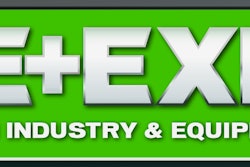 Source: Fox Business
Source: Fox BusinessHave you decided on a retirement plan? Have you even thought about retirement?
Retirement may seem like a far-out option, but some argue it’s never too early to start thinking about planning for retirement.
There are a lot of options when it comes to planning and picking the right plan for your business.
For instance, should an owner choose a SIMPLE plan or a Savings Incentive Match Plan, which is similar to a 401(k) plan?
Before anything is decided, there are a variety of questions that need to be answered.
Author William Black Jr. has described the difference in retirement plans and how owners should go about picking the best retirement plan for his or her business.
SIMPLE vs. 401(k): Is there a difference?
Several considerations go into the final decision. For example, how many employees will participate? To what degree will employees contribute, if at all? What is the employer’s budget? Does the business owner sponsoring the plan wish to participate? Would the business owner like to use the plan to garner large income tax deductions for his or her account while simultaneously getting the tax deferred asset growth, asset protection from judgment creditors, etc.? The answers to these questions, and others, will determine the right choice.
Both SIMPLE Plans and 401(k) plans are salary deferral plans, allowing the employee to defer a portion of their earned income with the employer making additional contributions. The difference is in how those contributions are structured and allocated among participants.
SIMPLE Plans:
Maximum Salary Deferral: 100 percent of earned income not to exceed $12,000. Those age 50 and older can make an additional $2,500 catch-up contribution.
The employer contribution is a dollar-for-dollar match of the employee’s contribution not to exceed 3 percent of the employee’s earned income. If the employee does not contribute, neither does the employer. Any contributions to employee accounts are 100 percent vested immediately.
It’s that simple. A SIMPLE is basic and much like a 401(k) plan, but less complexity. Set-up is simple, too. Download the necessary forms right off irs.gov. No set up cost, no annual filings, etc. That’s the good part.
The downside? The contribution is much less than one can achieve in a 401(k), which limits the business owner’s contribution for him or herself. In addition, one cannot have a SIMPLE and any other type of plan. The business sponsor must make announcements to the employees annually offering the option to enter the plan if they previously declined, offer the option to withdraw, or the option to increase or reduce deferrals. It is suggested these forms be retained to prove compliance. One must ensure all those eligible are offered admission.
As the plan is a simple web download, all compliance issues are a responsibility of the employer.
401(k) Plans:
Salary Deferral: 100 percent of earned income not to exceed $18,500 (2018 limit. This is indexed annually.)
Those age 50 and older may make an additional $5,500 catch up contribution.
Employers can make additional contributions to bring the annual addition to one’s account up to $51,000 ($56,500 with catch up).
A Plan sponsor typically offers a 401(k) to all employees, but this is not required. Internal Revenue Code Section 410 (IRC 410) allows a plan to be qualified by covering only 70 percent of all eligible employees.
The employer’s contribution can be made in many forms, for example mandatory or discretionary matching contributions, or a combination of both. Different forms of Safe Harbor contributions and discretionary Profit Sharing contributions that can be allocated among the eligible participants in several different ways. Only Safe Harbor contributions are 100 percent vested immediately. All other employer contributions vest over a number of years, depending on the vesting schedule chosen.
One may have a 401(k) plan and others simultaneously. Indeed many also maintain Cash Balance plans or Defined Benefit plan along with the 401(k).
Downside: These Plans require set up and annual administration and the attendant fees. However, a good administration firm’s responsibility is to ensure ongoing compliance.










